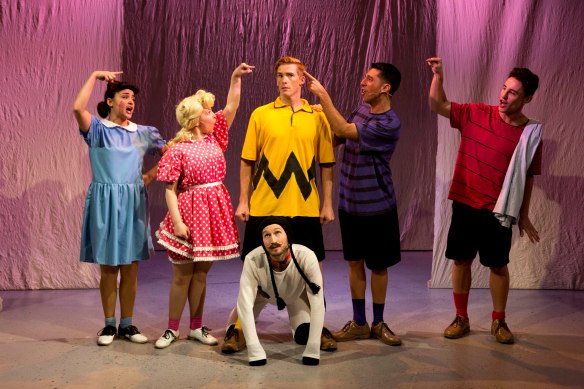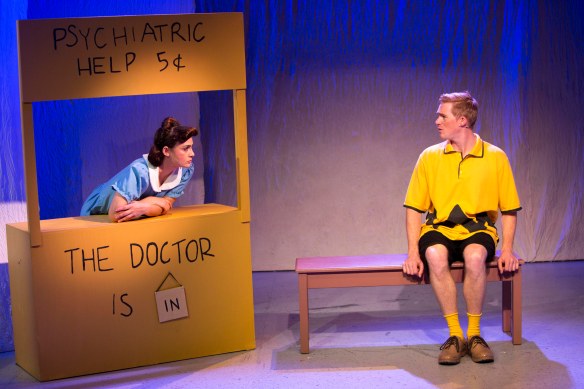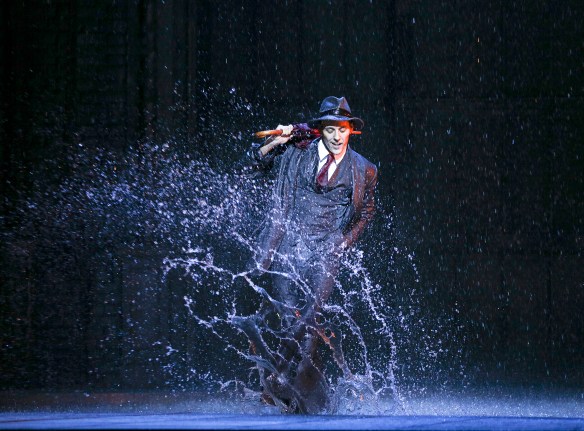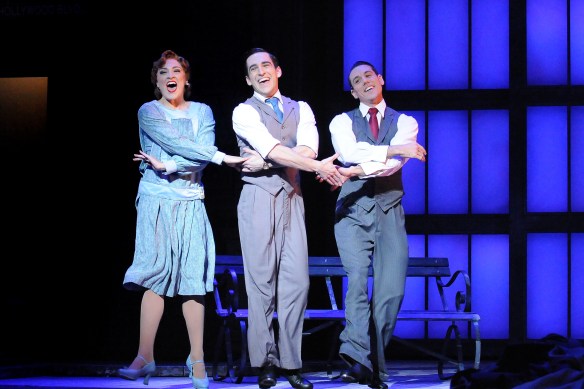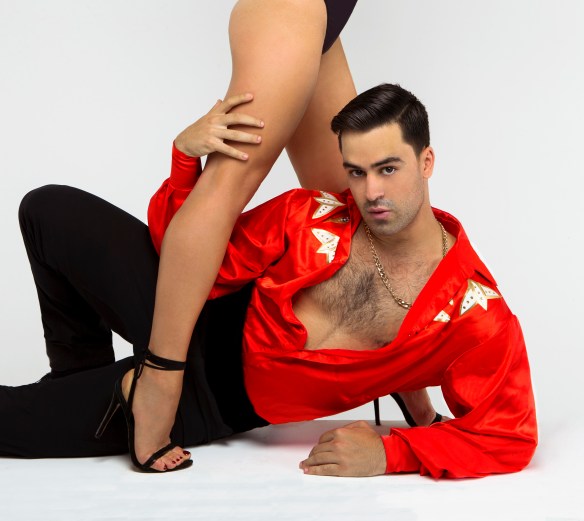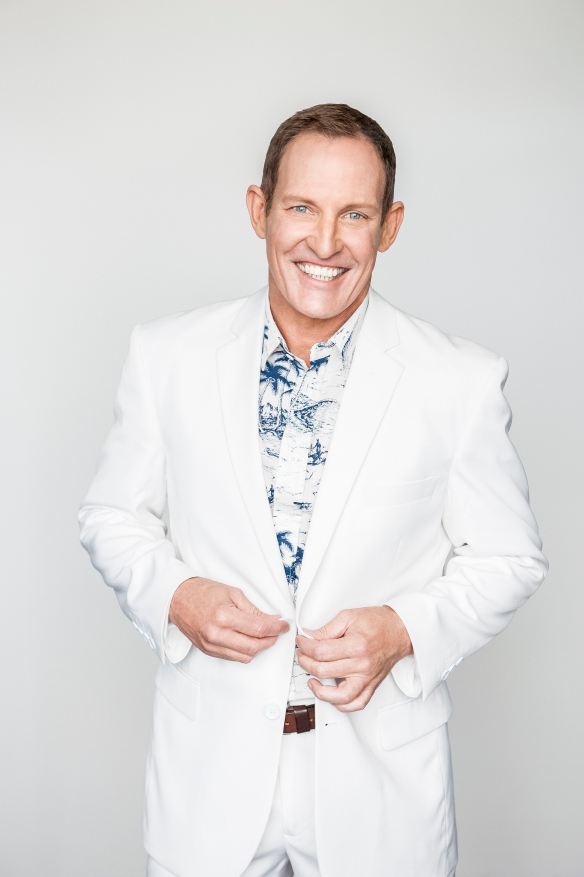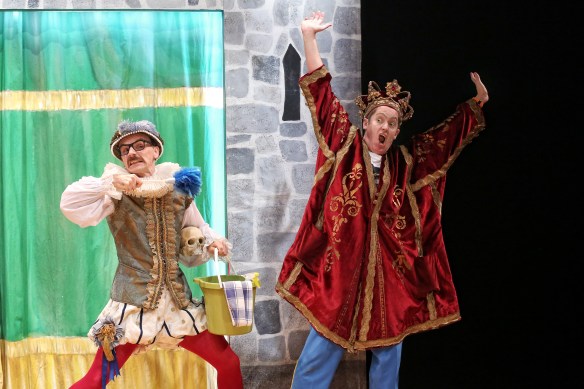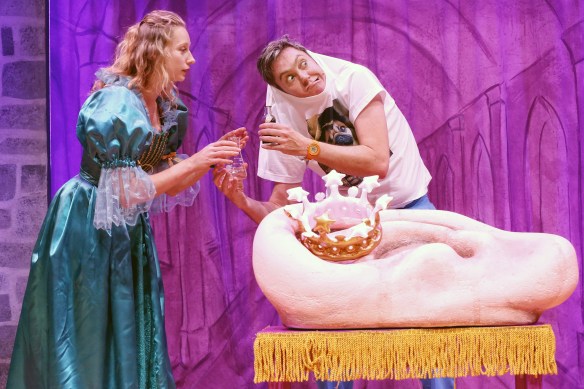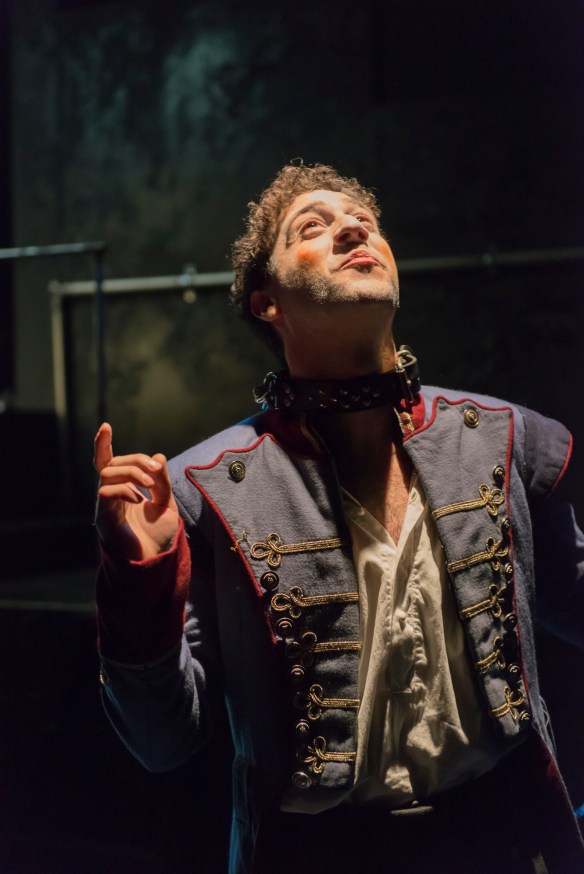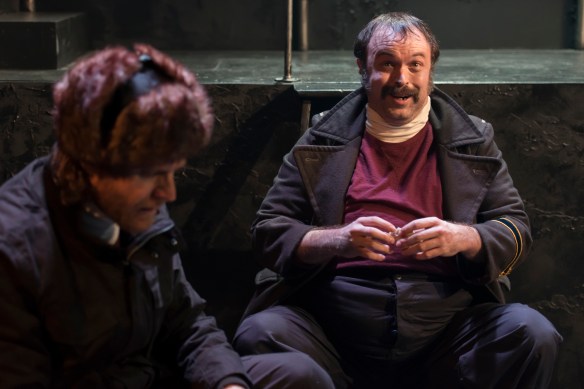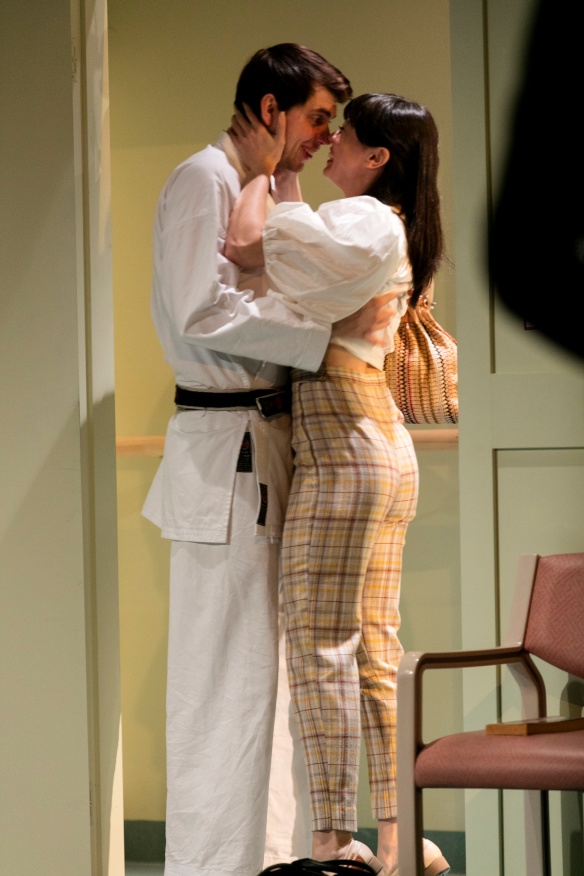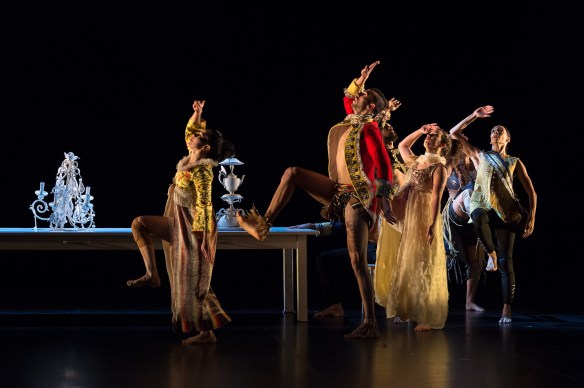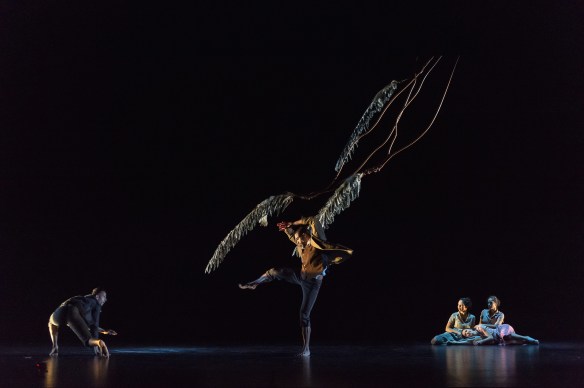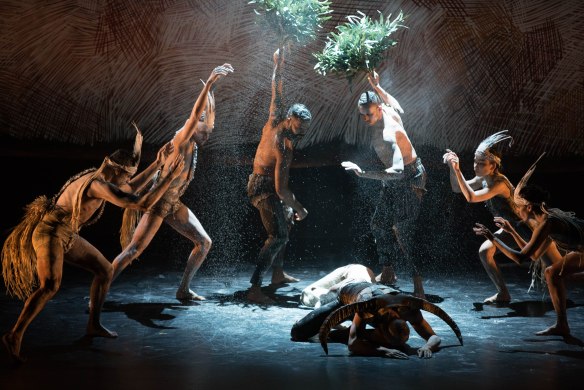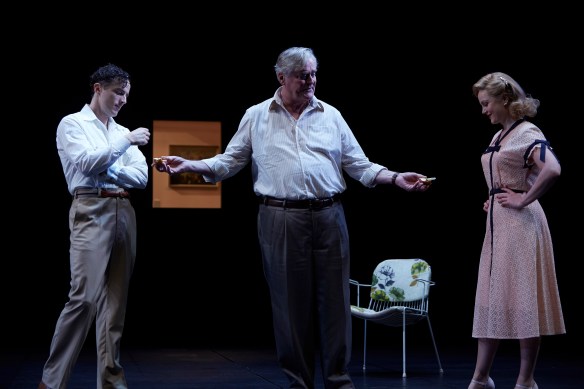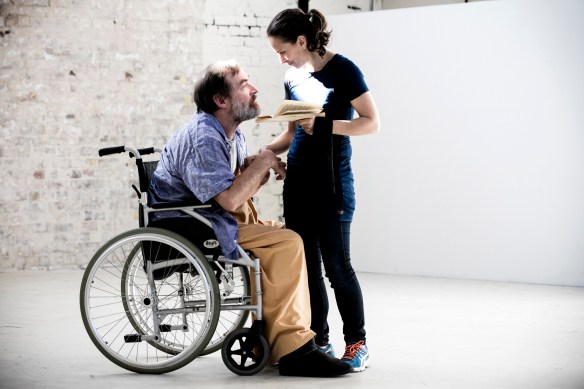
Keith Robinson and Lucia Mastrantone rehearse Twelfth Night for Belvoir. Photo: Brett Boardman
In 2006, Keith Robinson went from being a fit, active young man to suddenly being unable to walk.
The highly regarded, busy actor, known for his comedy skills, was diagnosed with a variant of Guillain-Barre Syndrome, a rapid-onset condition causing extreme muscular weakness, and was in hospital and rehabilitation for five-and-a-half months.
“I went from running around the block to not be able to walk in a three-week period. There was no sense of being unwell or sick, it was just like it was happening to somebody else. My whole body muscularly just powered down to nothing virtually. But then I regained some strength to where I’m wheelchair bound but I can take care of myself, sort of,” says Robinson.
A decade on, he is back on stage for the first time since his diagnosis, playing the clown Feste in a Belvoir production of Shakespeare’s Twelfth Night, directed by the company’s artistic director Eamon Flack.
Robinson has performed in many Belvoir productions over the years. In the early 1990s he was part of the Company B ensemble and appeared in landmark productions including Hamlet with Richard Roxburgh, Geoffrey Rush and Cate Blanchett in 1994 and The Tempest with Blanchett and John Bell in 1995.
His other credits include the original Australian production of Les Miserables and Nicholas Nickleby for Sydney Theatre Company. He also co-wrote The Popular Mechanicals with Tony Taylor, a wonderfully mad comedy inspired by Bottom and co in Shakespeare’s A Midsummer Night’s Dream, which premiered at Belvoir directed by Rush.
Returning to the stage is “wonderful”, says Robinson during a break in rehearsals.
“For better or worse I actually identified myself almost entirely through my work so when that was taken away it’s like my whole life was just ripped away from me.
“This was the first (acting) offer I’ve had and it came out of the blue. At the end of last year my agent Sue Barnett was calling me. I thought she was ringing to say ‘let’s have a coffee’ but she said, ‘no, I am actually ringing as your agent.’ All those synapses and nerves just sparked back into life: a job!” says Robinson with a laugh, admitting he now hopes others will follow.
Robinson says he doesn’t know why Flack decided to offer him the role. “That may be a question for the final night at the bar: ‘so, how did it happen?’” he says grinning.
“There seems to be a society-wide sea-change in terms of diversity in all sorts of areas and certainly in the theatre in terms of gender blind casting, ethnicity blind casting and now mobility/ability blind casting. To my knowledge this is the first time that one of the main (Australian) theatre companies has cast like this where the character isn’t in a wheelchair but the actor is. So I take my hat off to Belvoir,” says Robinson.
Chatting in the rehearsal room, where a special ramp has been built leading up onto the stage area and where there are several wheelchairs behind a wall on the set, Robinson admits that having excitedly accepted the offer to perform in Twelfth Night, he then had second thoughts.
Feste has several melancholic songs in the play – with Alan John composing the score for Flack’s production – and Robinson was worried that he wouldn’t be able to handle them.
“To be honest with you, I actually said ‘yes’ and then got cold feet and pulled out and said, ‘no, this is beyond my technical and physical capability’ because one of the things that happened to me is that I lost all my abdominal muscles, all my intercostals, all my breath support, diaphragm muscles. I just felt that the songs that Feste has were an essential part of the character and I felt, ‘I can’t do them,’” he says.
“I met with Eamon one more time and he literally batted away all the negative feelings that I brought to the table and he said, ‘we’ll deal with it, we’ll deal with it.’ And I felt, ‘well if you are willing, who am I to say no?’ So we are finding theatrical ways to render the songs that might not be expected.”
Working with Flack has been “fantastic”, says Robinson. “I wanted to be in a rehearsal room with Eamon (because) his ethos and aesthetics seemed to be like-minded to mine and a lot of the fun you have (on a show) is in that initial rehearsal period where you are delving into the piece and exploring it, and I liked his mind.
“I was so thrilled when he got the artistic directorship of Belvoir. Having seen his productions of The Glass Menagerie and Angels in America, I felt there was nobody better suited to the Belvoir company. I think he is in so many ways the natural successor to the company that it had been in the past. He will take it into new territory but not in a divorced way from what has gone before.”
Twelfth Night plays Belvoir St Theatre until September 4. Book: www.belvoir.com.au or 02 9699 3444
A version of this story ran in the Sunday Telegraph on Sunday July 24

